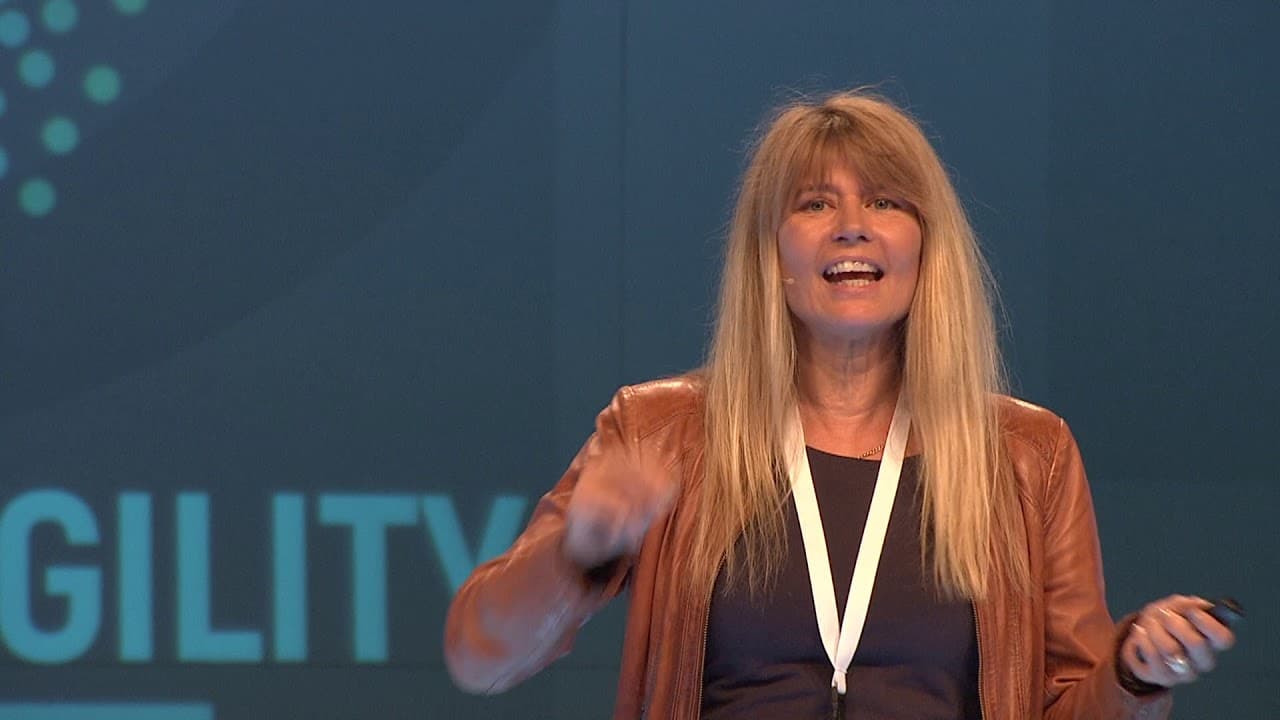Hello everybody! I’d like you to start by standing up because you’ve been sitting for 40 minutes, and you probably need to move a bit. Now, turn to your neighbor and answer this question: Have you ever held back from sharing something at work? It could have been an idea, a mistake, or a question you had but didn’t voice because you were worried about how people would react.
Thank you. If you answered "no" to this question, you’re either incredibly confident—or you’re lying. Psychological safety might be the most important thing in our organizations. I’ll talk more about it later, but first, I want to start with a statement:
"The Agile force is strong in me." And by the way, I’m on the good side, so you don’t need to worry.
Why Agile Matters
I say that because I have an agile personality. I know my inner motives, my drives, and that makes me agile at heart. Not everyone is naturally agile, which is why convincing managers about the value of agility can be difficult.
Today, I’m going to talk about:
- Why the dinosaurs died.
- Why we can’t continue working the way we used to.
- What HR and leaders can do about it.
Survival of the Most Adaptable
Do you recognize this man? Charles Darwin. He talked about survival of the fittest. Many people misunderstand this to mean that the strongest survive. But what he actually meant was that the most adaptable survive. The species, animals, and plants that can adjust to a changing environment will continue to thrive.
Think about Henry Ford and Frederick Taylor’s scientific management. Ford had a simple business model: produce a thousand cars, sell a thousand cars. There was little competition, and everything was predictable. That world no longer exists. Today, car companies are racing to keep up with Tesla. Ford’s Model T only came in one color and one model. That wouldn’t work now.
Ford once said, “Thinking is the hardest work there is, which is probably why so few engage in it.” He divided the workforce into thinkers and doers, reflecting his view of people.
Theory X vs. Theory Y
Douglas McGregor, in his book The Human Side of Enterprise, introduced Theory X and Theory Y:
- Theory X: People are lazy, unmotivated, and avoid responsibility. They need strict control, punishments, and rewards to stay productive.
- Theory Y: People are naturally motivated, want to contribute, and seek meaningful work.
So, who here believes in Theory X? Nobody? And who believes in Theory Y? Yes, of course!
We often assume other people are X while we are Y. But the truth is, everyone is a Y person. It’s the structures of our organizations that make people behave like X. If we design systems based on distrust, people will game the system.
Fabiola Hauser talks about the Douglas effect—how companies structure their management processes around the worst possible employee rather than designing for the 98% of people who are capable and motivated.
The Role of HR in Agile Transformation
HR must evolve. Josh Bersin talked about this back in 2011, emphasizing that HR needed to focus on speed, customers, and adaptability. But what has changed since then?
Not much.
HR must lead the Agile transformation. Why? Because HR controls the deep structures of an organization: change management, leadership programs, performance management, competency development, recruitment, and talent acquisition. If HR doesn’t change, the organization won’t change.
Agile coaches should report to HR—not IT—because Agile is about people, not just technology.
Shifting from Fixed Roles to T-Shaped People
We need to move from rigid job descriptions and performance labels to a flexible, t-shaped workforce. This means:
- From developing rigid policies to supporting flexibility.
- From delivering HR programs to co-creating with employees.
- From individual work to teamwork and cross-functionality.
- From promotions and bonuses to salary formulas and collective decision-making.
Agile Leadership: The Gardener Metaphor
Traditional managers focus on performance control. Agile leaders enable performance. The CEO is no longer the Chief Executive Officer—they are the Chief Enabling Officer.
Think of leadership like gardening. A garden has a purpose—maybe to be beautiful or to produce fruit. The manager is the gardener. Each plant is different—some need sunlight, others shade. Some need lots of space, others grow best in tight clusters. A good leader knows their people and creates the right conditions for them to thrive.
You can’t scream at a plant to grow. If it doesn’t grow, either:
- The environment is wrong—change it.
- The seed is bad—help it find a better place to grow.
Changing Organizational Culture
Kurt Lewin’s formula (1936) states that Culture = Personality + Environment. You can’t change people, but you can change the environment.
“Don’t manage people. Manage the system.” Change the processes, tools, and infrastructure, and people will behave differently.
Psychological Safety & Continuous Learning
Psychological safety is essential. In a safe workplace:
- People admit mistakes.
- They learn from failure.
- They share ideas openly.
If people feel unsafe, they stay quiet and avoid taking risks—leading to stagnation.
Agile Leadership Principles
- Move from control to motivation.
- Encourage free-flowing communication.
- Replace micromanagement with autonomy.
- Shift from individual decision-making to team collaboration.
How to Get Started
There is no best practice. Only mediocre companies use best practice. Instead:
- Remove limiting structures (mainly in finance and HR).
- Increase supportive structures to enable new behaviors.
- Repeat—because old structures will try to creep back in.
Final Thoughts
Enabling business agility is a continuous journey. I invite you to attend our Agile HR & Leadership Workshop—details at agilepeople.se/events.
Thank you for listening!



 The presentation will cover what Leaders and HR managers need to be aware of when adjusting Ways of Working to the new paradigm of employee driven organizations (self-management) and how to make people go in a certain direction without using formal power. In an agile organization it is more about making it possible for teams to self organize in an agile reality, unleashing human potential and optimizing for performance in a complex and agile world. You unleash human potential by knowing your employees deeply and taking time to understand what would make them go in the direction that you want them to go in, because THEY want to go in that direction.
The presentation will cover what Leaders and HR managers need to be aware of when adjusting Ways of Working to the new paradigm of employee driven organizations (self-management) and how to make people go in a certain direction without using formal power. In an agile organization it is more about making it possible for teams to self organize in an agile reality, unleashing human potential and optimizing for performance in a complex and agile world. You unleash human potential by knowing your employees deeply and taking time to understand what would make them go in the direction that you want them to go in, because THEY want to go in that direction.